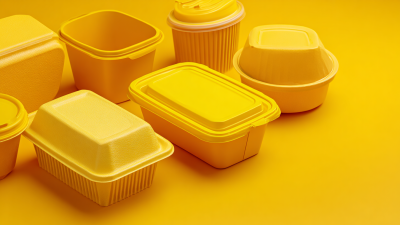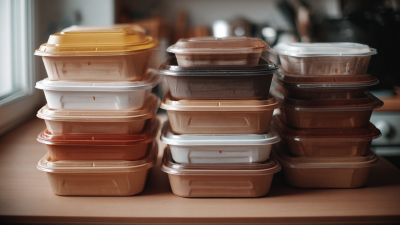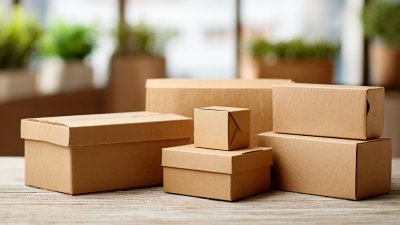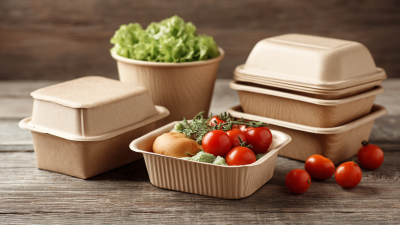As the global shift towards sustainability continues to gain momentum, the food packaging industry is witnessing a remarkable transformation, particularly in the realm of Disposable Containers. According to a report by Smithers Pira, the global market for sustainable packaging is projected to reach $600 billion by 2024, with eco-friendly disposable containers expected to play a pivotal role in this growth. The increasing awareness among consumers regarding environmental issues, coupled with governmental regulations aimed at reducing plastic waste, has spurred innovation in packaging solutions.

In 2023, manufacturers are introducing cutting-edge materials made from plant-based sources, such as sugarcane and cornstarch, which not only reduce the carbon footprint but also meet the needs of modern consumers who prioritize convenience and sustainability. This article will explore the top five eco-friendly disposable containers that are revolutionizing food packaging, paving the way for a greener future while supporting the industry’s transition towards more responsible practices.
As we delve into 2023, the focus on eco-friendly materials in disposable food containers continues to reshape consumer choices and preferences. From biodegradable options to materials derived from plant sources, the market is seeing a significant shift towards sustainability. This change is driven by heightened awareness among consumers about the environmental impact of packaging waste, with a growing demand for alternatives that minimize carbon footprints and promote recycling initiatives.
Emerging trends reveal that consumers across various regions are increasingly seeking packaging that aligns with their values of sustainability. Reports indicate that despite rising living costs, interest in eco-friendly packaging remains strong, although individual priorities may vary. Innovations in food packaging materials, such as nanocomposites, showcase the industry's ability to adapt and meet these new demands by enhancing food quality and durability while remaining environmentally responsible. As governments and organizations advocate for reduced reliance on single-use plastics, the momentum for adopting sustainable packaging solutions strengthens, ultimately encouraging broader industry shifts towards ecological mindfulness.
In 2023, the drive toward sustainability in food packaging has led to innovative designs in eco-friendly disposable containers that significantly enhance food preservation and minimize waste. According to a report by the Sustainable Packaging Coalition, nearly 60% of consumers prioritize sustainable packaging, prompting companies to adopt biodegradable and compostable materials. These new designs not only reduce reliance on single-use plastics but actively contribute to extending shelf life, thus reducing food spoilage. Research from the Food Packaging Forum indicates that packages made from natural fibers can reduce oxygen exposure by up to 50%, enabling fresher products and fewer discarded items.
Furthermore, these advancements are beginning to resonate within the food industry, as brands recognize the dual benefits of eco-friendly packaging. A study conducted by the Nielsen Company found that products with sustainable packaging can see up to a 30% increase in sales. This shift is not merely a trend but a substantial move towards a circular economy, where materials are reused rather than discarded. By leveraging technology to create containers that are both functional and environmentally sound, we are witnessing a pivotal moment in food packaging that fosters both economic and ecological health.
The rise of biodegradable containers is significantly reshaping the food packaging landscape in 2023. As the disposable cup and lid market is projected to reach approximately $466.66 million by 2025 and grow at a CAGR of 5.17% to $608.64 million by 2033, there's an increasing demand for eco-friendly alternatives to traditional plastic products. This shift is largely driven by escalating concerns over plastic pollution, which poses a lethal threat to various marine species and ecosystems. Studies have indicated that unprocessed plastic wastes severely endanger wildlife, particularly in aquatic environments.
Furthermore, the biodegradable copolymers market is expected to expand from $922 million in 2025 to $1.285 billion by 2033, reflecting a compound annual growth rate (CAGR) of 4.24%. The escalating demand for sustainable packaging solutions resonates with consumers’ growing environmental consciousness. Bioplastics, made from renewable resources, are gaining traction, with forecasts indicating the bioplastic utensils market will grow at a CAGR of 5.6% from $40 million in 2024 to $60 million by 2033. This shift not only promotes sustainable practices in the food industry but also signals a broader transformation towards a more responsible approach to packaging.

As consumer preferences shift dramatically towards sustainability, the food packaging industry is experiencing a revolutionary transformation. According to a recent report by Smithers Pira, the global market for eco-friendly packaging is anticipated to reach $400 billion by 2024, with a significant portion driven by consumer demand for biodegradable and compostable materials. This trend is reshaping how brands approach packaging design, prompting a surge in innovative solutions that prioritize environmental impact while meeting consumer expectations.
Additionally, a survey conducted by Nielsen revealed that 73% of global consumers are willing to change their consumption habits to reduce their environmental impact. This shift is particularly visible in the food sector, where brands are increasingly offering disposable containers made from plant-based materials, such as PLA and bagasse. These materials not only reduce carbon footprints but also align with consumer preferences for products that support a circular economy. As businesses adapt to this evolving landscape, the adoption of eco-friendly packaging solutions is expected to accelerate, paving the way for a more sustainable future in food packaging.
Governments around the world are increasingly recognizing the importance of sustainable food packaging and actively supporting the transition towards eco-friendly solutions. Regulatory frameworks are being established to incentivize businesses to adopt environmentally friendly practices, such as utilizing biodegradable materials and reducing plastic waste. Policies like tax breaks for companies using renewable resources and stricter regulations on plastic production enhance the demand for sustainable packaging alternatives. These measures not only protect the environment but also encourage innovation in food packaging technologies.
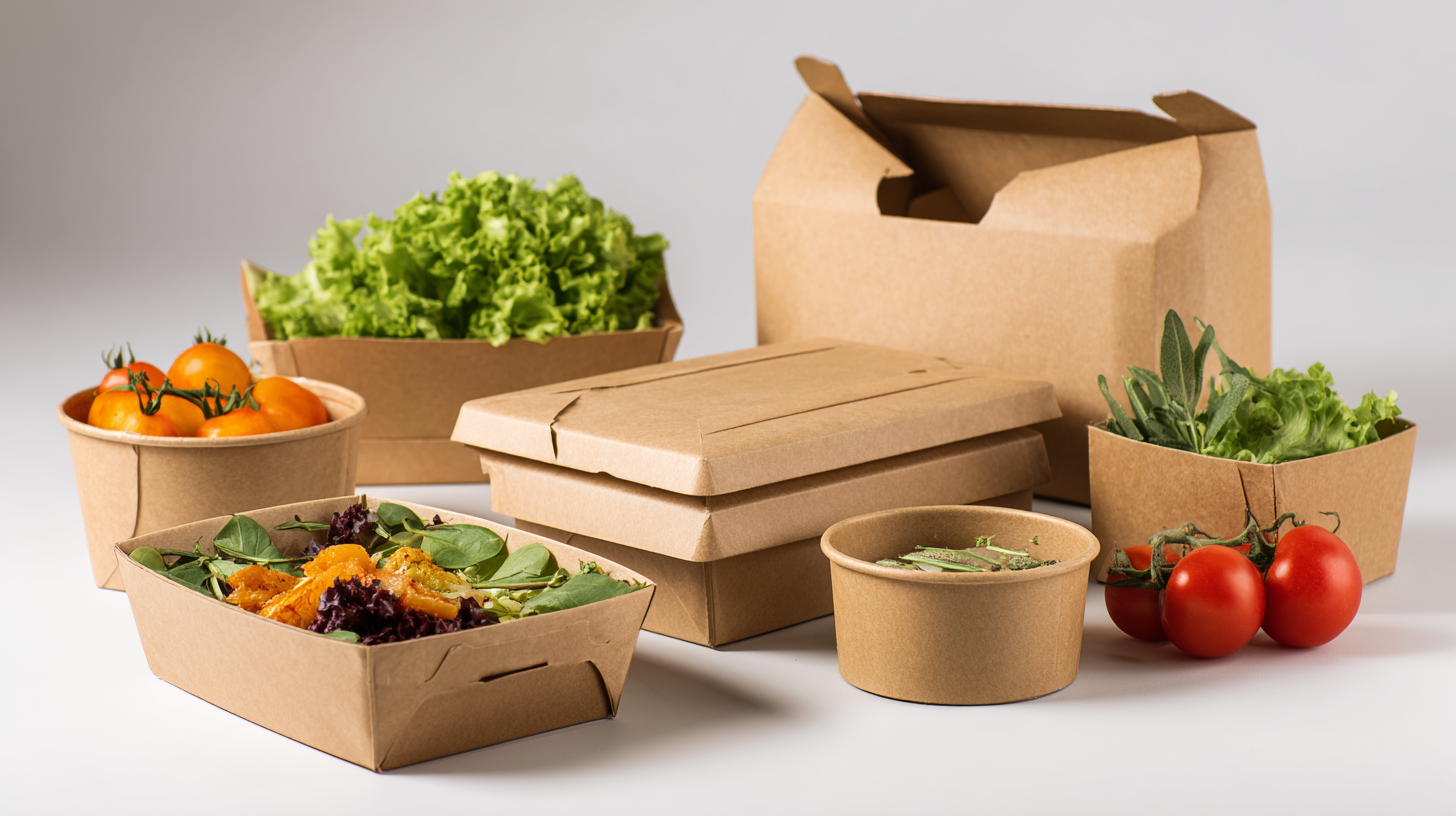
In addition to regulations, governments are promoting awareness of the ecological impacts of traditional packaging methods. Educational campaigns inform the public about the benefits of eco-friendly disposable containers, fostering consumer demand for sustainable options. By supporting research and development in biodegradable materials, governments are paving the way for new products that meet both convenience and sustainability criteria. This regulatory support is crucial in driving the food packaging industry towards a more responsible future, ensuring that both businesses and consumers can participate in reducing their ecological footprint.
